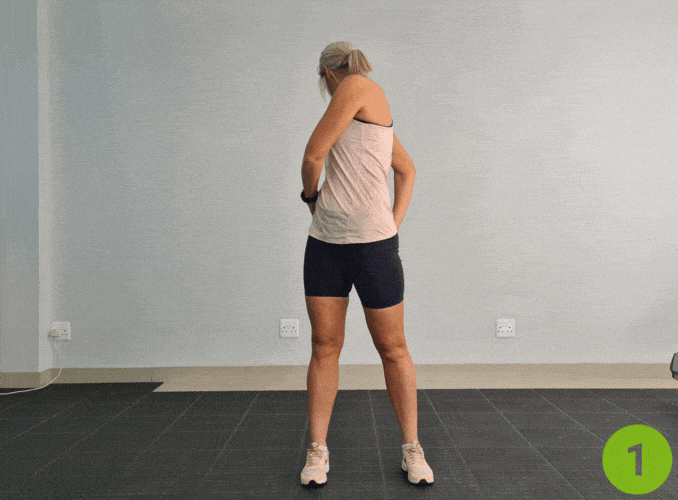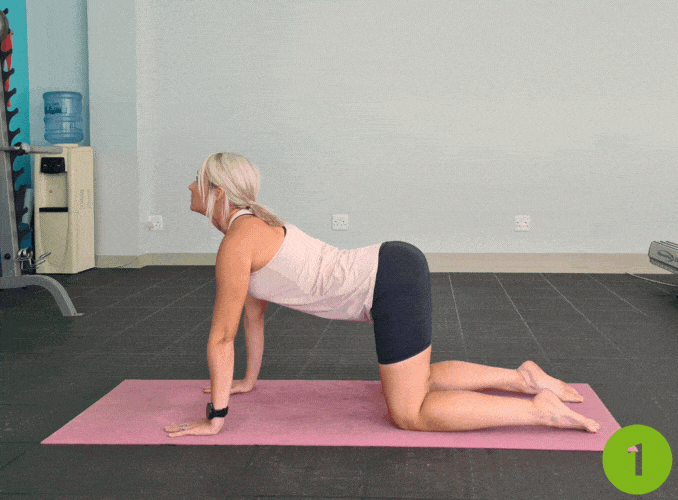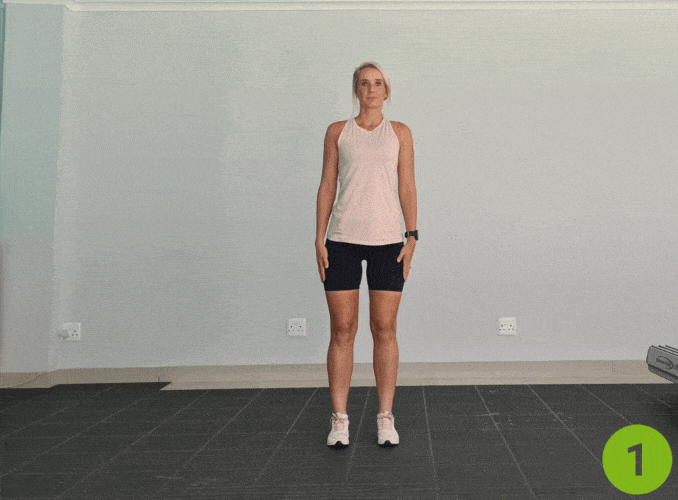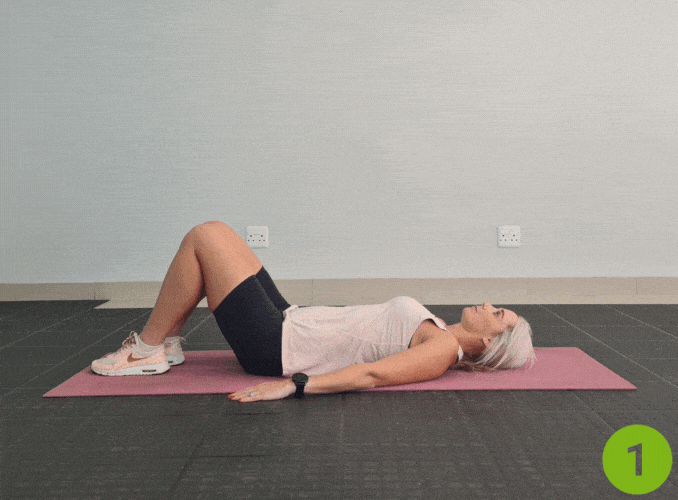
Medical Disclaimer: The information in this blog is for enlightening and educational purposes only and is not intended as medical advice. The content in this post is not meant to substitute for a professional medical diagnosis, advice, or treatment. Always ask advice from your physician or other qualified health providers with any questions you may have regarding a medical condition.
Have you ever experienced a sharp, stabbing pain in your abdomen while sitting still or after a heavy meal? If so, what causes a stitch when not exercising?
This common occurrence, often referred to as a stitch [3] can be quite uncomfortable. In this article, we’ll explore the ins and outs of stitches, their causes, and how to prevent them.
1. Deep Breathing Exercise
Start with 1-2 minutes and gradually increase to 10 minutes as your body adjusts.

- Begin in an upright sitting position with your knees bent and feet flat on the floor.
- Maintain good alignment with your head, shoulders, and hips
- Place your hands at your sides with palms facing in front.
- Engage your core muscles.
- Hold your breath for 3 seconds. Exhale slowly through pursed lips, emptying your lungs completely.
2. Torso Twists

- Begin in an upright standing position with your feet hip-width apart.
- Maintain good alignment with your head, shoulders, hips, and legs.
- Place your hands on your hips. Engage your core muscles.
- Gently twist your torso to the right while keeping your hips facing forward.
- Hold the position for a couple of seconds, then return to the starting position and repeat the movement on the opposite side.
- Repeat the sequence of movements with 10 repetitions.
3. Cat-Cow Stretch

- Begin in a 4-point position with your hands beneath your shoulders and your knees under your hips.
- Engage your core.
- Arch your mid-back as you lift your head upward.
- Then, tuck your tailbone in and round your spine as you lower your head downward.
- Repeat the sequence of movements with 10 repetitions.
4. Side Bends

- Begin in an upright standing position with your feet hip-width apart.
- Maintain good alignment with your head, shoulders, hips, and legs.
- Place your hands at your side.
- Engage your core muscles.
- Raise your right arm overhead as you slightly lean to the left side.
- Hold the position for a couple of seconds.
- Lower your arm to return to the starting position and repeat the movement on the opposite side.
- Repeat the sequence of movements with 10 repetitions.
5. Pelvic Tilts

- Lie on your back with your knees bent and feet flat on the floor, maintaining good alignment with your head, shoulders, hips, and legs.
- Place your hands at your side with palms pressed on the floor.
- Tighten your abdominal muscles.
- Squeeze and tilt your pelvic floor muscles in and tilt your pelvis down pressing your low back into the floor.
- Hold this position for several deep belly breaths, in through your nose and out through your mouth.
- Relax and return to the starting position.
- Repeat the sequence of movements with 10 repetitions
6. Walking Lunges

- Begin in an upright standing position with your feet hip-width apart.
- Maintain good alignment with your head, shoulders, hips, and legs.
- Place your hands on your hips.
- Engage your core muscles.
- Step forward with your right foot as you bend your knee to lower your body into a lunge position.
- Ensure your right knee is above your ankle and your left knee hovers above the ground.
- Push back to return to the starting position and switch legs.
- Perform 10 lunges on each leg.
What is a Stitch?
A stitch refers to a sudden, localized pain often felt in the abdomen or pelvic cavity [2]. It is most commonly experienced during physical activity, but it can also occur when resting.
This sharp pain might be on one or both sides of the abdomen and is usually a result of muscle cramps or diaphragm cramping.
What Causes a Stitch When Not Exercising?
The exact cause of a stitch is not entirely understood, but several factors contribute:
One notable insight comes from Dr. John McKinney, a sports medicine physician and a member of the American College of Sports Medicine. He explains that “stitches, or side cramps, often arise from a combination of factors, including diaphragm muscle cramps and irritation of the abdominal lining. While more common during exercise, they can also occur when sitting or after eating, particularly if the stomach is full. Deep breathing and maintaining good posture can help alleviate and prevent these painful episodes.
- Diaphragm Muscle Cramp: The diaphragm muscle, which assists in breathing, can cramp, leading to sharp pain in the abdominal region.
- Blood Flow: During intense physical activity, blood flow is redirected from the diaphragm to other muscles, which may cause discomfort.
- Shallow Breathing: Many individuals tend to take shallow breaths during exertion, which can exacerbate stitch symptoms.
- Stomach Ligaments: Sudden movements can stretch the ligaments attached to the stomach, resulting in a pulling sensation that manifests as pain.
Why Do I Get a Stitch When Running?

When running, the intensity of the exercise increases the likelihood of experiencing a stitch. What causes a stitch when not exercising is a related mystery, but during physical activity, exercise-related transient abdominal pain [1] can be triggered by:
- Inadequate Warm-Up: Not warming up properly can lead to unexpected cramps.
- Improper Breathing Patterns: Shallow or irregular breathing can strain the diaphragm.
- Poor Running Form: Bending forward or having a hunched posture can contribute to increased pressure on the abdomen.
Younger athletes may be more susceptible to stitches due to their bodies still adapting to the demands of physical activity.
How Do You Prevent a Stitch?
To minimize the risk of experiencing a stitch, consider the following strategies:
- Warm Up and Cool Down: Always include warm-up exercises before engaging in physical activity and cool down afterward.
- Practice Deep Breathing: Focus on taking deep, controlled breaths to keep your diaphragm relaxed.
- Maintain Good Posture: Whether running or sitting, proper posture can alleviate pressure on the abdominal area.
- Stay Hydrated: Drink plenty of water, but be mindful of your intake of sugary drinks before exercising.
- Listen to Your Body: If you start to feel discomfort, slow down or stop exercising to prevent exacerbating the pain.
If the stitch pain persists or is accompanied by other symptoms, it’s wise to seek medical attention. While most stitches are harmless, understanding what causes a stitch when not exercising is important, as persistent pain could signal a more serious issue.
Conclusion
Stitches are a common yet mysterious phenomenon that many experience during and even outside of exercise. Understanding what causes a stitch when not exercising can empower you to take preventive measures and engage in your fitness routine without fear of sudden abdominal pain.
By focusing on proper breathing, maintaining good posture, and gradually increasing exercise intensity, you can significantly reduce your chances of encountering this discomfort.
Remember, if you experience severe or lasting pain, don’t hesitate to seek medical care. Your health is paramount!
Discover the link between unexplained abdominal pain and diet—get Best Foods that Rapidly Slim & Heal in 7 Days – Digital Download (EFISP) now to support a healthier, pain-free body!
FAQs About What Causes A Stitch When Not Exercising
Why do I have a stitch in my side for no reason?
A stitch can occur due to muscle cramps, diaphragm irritation, or even digestive issues, especially after eating or sitting for long periods.
What deficiency causes stitches?
While no specific deficiency is solely responsible, dehydration and electrolyte imbalance can contribute to muscle cramps, and decreased function of the diaphragm.
Why am I getting a stitch when doing nothing?
Stitches can arise from sudden movements, poor posture, or pressure on the abdominal area, even when at rest.
What triggers a stitch?
Common triggers include intense physical activity, shallow breathing, eating before exercise, and sudden movements that stress the abdominal muscles.
How do I know if my side pain is serious?
If side pain is severe, persistent, or accompanied by other symptoms like fever, nausea, or difficulty breathing, seek medical attention to rule out serious conditions.

